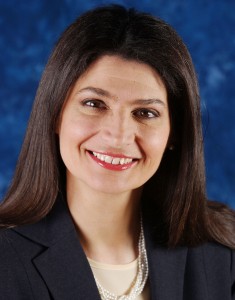 The producer of Waiting for Superman says he didn’t mean to imply that all Charter Schools were better than all Public Schools. He failed. That’s exactly what he seems to be saying.
The producer of Waiting for Superman says he didn’t mean to imply that all Charter Schools were better than all Public Schools. He failed. That’s exactly what he seems to be saying.
But public school teachers and support staff are used to politicians and pundits ignoring their voices. Why would a movie director who needed a simple story of good guys and bad guys be any different?
If only he had asked us, “Show me something that works,” we could have shown him a story worth telling. There are so many Clark Kent heroes who are specifically focused on immigrant communities and the success of Latino and other students of color.
I would have loved to have shown him Las Vegas. It would have been a different movie if he had seen how the Clark County Education Association is working with their superintendent and school board on school empowerment projects. They are transforming public schools with the radical notion that when you bring the school community together to discuss what’s working and what has to change, they will be creative problem solvers.
In Paul Culley Elementary, 60% of the students are Latino. Nearly all are on free lunch. Five years ago not even 25% of their students could read on grade level. Five years later, 57% of their kids are on grade level, and the percentage grows each year. The magic wasn’t some lottery or some carrot or some stick. It was caring teachers and support staff who started the journey by discussing the purpose of education – developing the whole child.
They thought about the needs of families. They rearranged the schedule so that middle school siblings could walk with their little brothers and sisters. The teachers decided how to group kids in different ways and organized after-school tutoring and clubs in art, music and sports, because a child is more than a test score.
I would have loved to have shown him Denver. Their Math and Science Leadership Academy is a union-designed, teacher-led public school that opened last year as a K-2 school with 134 students and will expand to K-5, adding a grade each year. Sixty percent of their students are English-language learners and 90% qualify to receive subsidized lunches.
This academically challenging program integrates science, mathematics and technology in a rigorous, standards-based model. Kids demonstrate achievement through service projects and real-world, hands-on work. Teachers coordinate and collaborate and analyze data and design instruction, constantly customizing that design to make sure kids are getting what they need.
Here’s the thing. There are some good charter schools and some miserable charter schools. There are some good public schools and some miserable public schools. What the good ones have in common is not a hero who flies in with x-ray vision to show parents and teachers what they’re doing wrong. What the good ones, charter or public, have in common is that the school community has come together in a well-defined purpose of caring for the whole child, and they purposefully designed a system of instruction, meaningful assessment and collaboration.
If only he had asked us to show him where teachers and our unions and parents and administrators were demanding, from within ourselves, something better, we could have knocked his socks off. But that would have ruined a Hollywood story of villains and superheroes. The true story, yet to be told, is the one without popcorn. It’s a quiet story without picket signs or grandstanding governors or Spandex with matching cape.
It’s caring teachers; hard working support staff; supportive parents and hopeful children doing their homework and preparing for the future they deserve.
Lily Eskelsen is vice president of the National Education Association. She is one of the highest-ranking labor leaders in the country and one of its most influential Hispanic educators.
For 20 years, she worked with students from kindergarten to sixth grade in the middle-class suburbs of Salt Lake and in the county’s one-room shelter school. She has taught children labeled gifted and children labeled homeless.
Lily has also served as president of the Utah State Retirement System; as president of the Children at Risk Foundation; as a member of the Utah LaRaza Education Committee; and as a member of the White House Strategy Session on Improving Hispanic Education.
Her education advice for parents has been published in Time, Working Mother, and Woman’s World, and she’s been featured on Fox News’ “Hannity & Colmes.”
She currently teaches at an elementary school in Utah. She graduated graduated magna cum laude in elementary education from the University of Utah where she later went on to earn her master’s degree in instructional technology.